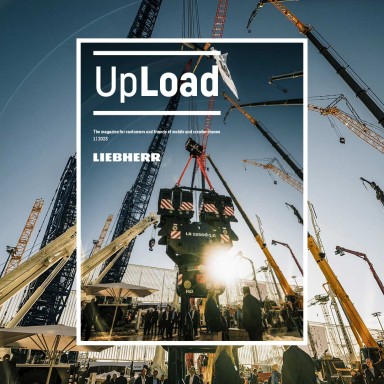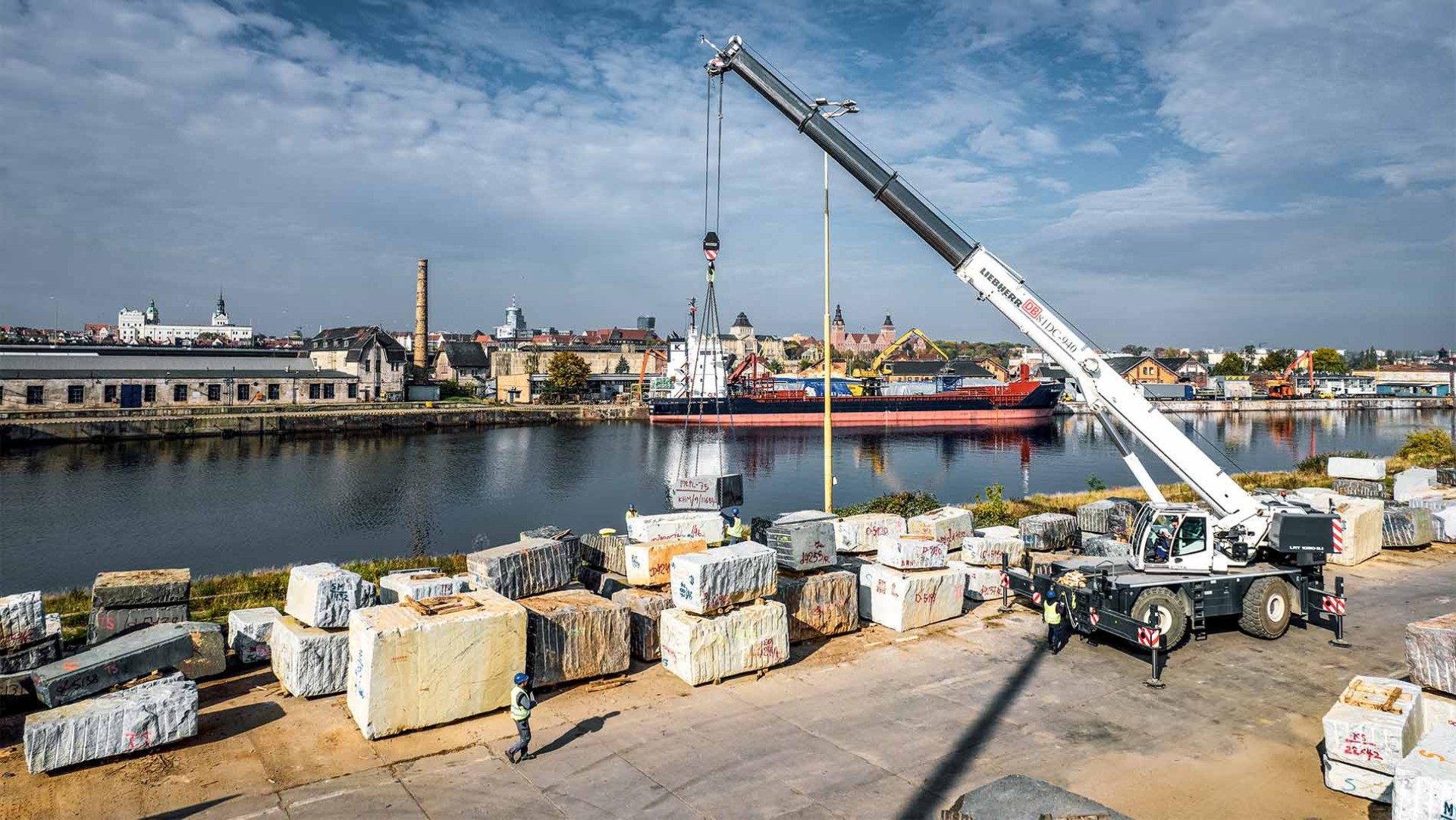
14 minutes - magazine 01 | 2023
It all started with rough terrain cranes
Dear Readers, shall we take a short trip through time? Then let’s go back almost 40 years and take a look at our neighbour, Poland.
Liebherr mobile cranes in Poland – a four-decade partnership
At that time the People’s Republic was one of what was known in the West as an “Eastern Bloc” country under the control of the Soviet Union. The large coal-fired power stations in the country at the time were searching for efficient machines to handle the crane work at their rapidly growing opencast mines and for material handling at the ports on the Baltic Sea coast. They required powerful hoisting tools for the increasing volume of goods being handled and to ensure that ever heavier components could be handled economically at the terminals. After a long search, the state-owned companies finally found what they were looking for at Ehingen. The initial negotiations were held in 1984 for an initial order of two Liebherr rough terrain cranes, marking the start of a long-lasting, solid and continuing partnership. We paid a visit to some of our Polish partners.
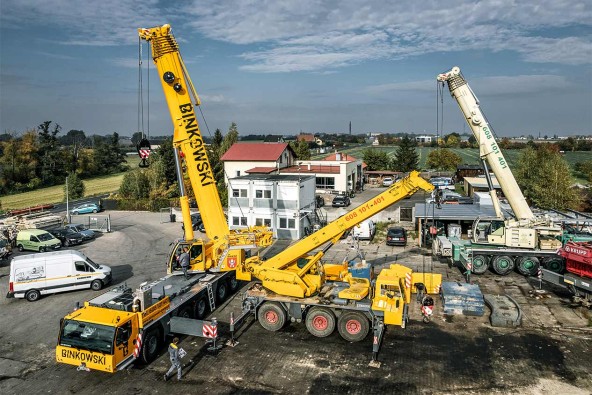
A new arrival - This scene is from a yard of one of our customers based to the south of Poznań. At the centre of a really colourful mixed fleet of used cranes you can see the first new mobile crane purchased by Binkowski. Company owner Przemysław Binkowski purchased his brand new LTM 1230-5.1 to complete orders in wind farms and for jobs at a prefabricated concrete component plant in Poznań.
The negotiations at the time were followed by extremely quick action. The LTL 1060 cranes which had been ordered were driven off the ship in the port of Gdansk in the summer of the following year. The two twin-axle power packs were destined for the lignite power plant at Bełchatów in the centre of Poland. These powerful machines proved to be only the start of a business relationship which rapidly expanded. Around a year later, over a dozen of the slightly smaller LTL 1030 rough terrain cranes left our plant to travel to the East. They were shipped to the port in Gdansk where they were used for handling work.
Whilst a total of around 40 Liebherr cranes at state companies delivered all the lifting power they needed at the time, today, a good thirty years later, there are around 1,200 cranes bearing the Liebherr logo and operated by over one hundred customers throughout the country. They are looked after from the site in Ruda Śląska, the location of our sales and service company, Liebherr-Polska sp. z o.o. This company covers all Liebherr divisions within the country. Almost all the repairs to Liebherr mobile and crawler cranes can be carried out in the spacious sheds at its service and repair centre, around three hours drive south-west of the capital Warsaw.
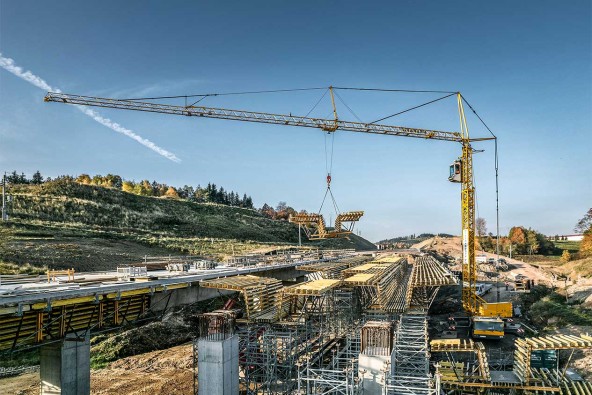
Increasing interest: MK models widely welcomed - Here we can see an MK 80 working on a new kilometre-long viaduct in the south-west of the country.
From used crane to new machine
A few years ago we were primarily delivering used cranes to Poland, but today our customers are increasingly placing orders for new mobile and crawler cranes. We regard the trend towards new machines and the obviously massive confidence of our partners in Liebherr products as strong signals. It is not just the flourishing economy, but also the decisive focus of the country on its policy to massively expand its renewable energy industry (thousands of wind turbines are planned) which have triggered the boom in new cranes. And we have also played our part in ensuring that this partnership is so successful. Our customers benefit from the rapid, competent support of our service engineers, the extremely good and quick availability of spare parts and, of course, the service centre in the south of the country. Find out more about the wide-ranging support that we provide for our partners further below.
Liebherr is always there quickly and efficiently.
“If there are ever any problems on site with our machines, Liebherr is always there quickly and efficiently”, says Michał Sobolewski, Site Manager at by far the largest Polish crane contractor, Lewandowska. We meet him at a brand new wind farm site not far from the small town of Żnin, around 200 kilometres west of Warsaw. “Over the next few months we plan to erect 27 Vestas wind turbines with hub heights of 120 metres”, continues Sobolewski. The trend we mentioned above towards new machines is clear to see during our visit to the future wind farm. Two brand new mobile cranes are in action handling wind turbine components. An LTM 1250-5.1 is unloading rotor blades and tower segments whilst a few kilometres away, a brand new LTM 1300-6.2 is hoisting heavy nacelles off a truck. The impressive Lewandowska crane fleet includes the most powerful cranes in the country, namely an LR 1750/2 crawler crane and several LG 1750 models. Almost all of the around 60 mobile and crawler cranes at the company’s five sites bear our logo.
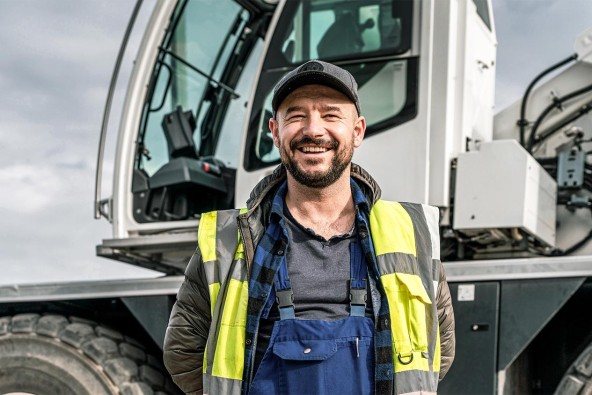
Fast and furious - Jarek Stańczyk speeds around the handling terminals at the Port of Szczecin in his powerful LRT 1090-2.1 rough terrain crane. His Liebherr crane often has stone blocks weighing up to 30 tonnes hanging from its hook.
Replacement after 30 years
During our tour of Poland, we also paid a visit to a really special model of one of “our” cranes. For this purpose, we travelled to Lower Silesia, where Poland’s borders meet both the Czech Republic and Germany. In fact, the Turów opencast mine there operated by energy company PGE GiEK, has the 40,000th mobile crane ever produced at our plant. We delivered the LRT 1100-2.1 to this opencast mine which extends over an area of around 25 square kilometres just over two years ago. Since then, the allwheel powered machine has been successfully fighting through the difficult terrain in the mine which is over 200 metres deep.
When we arrived at the crane’s location after passing slag heaps and heaps of topsoil and travelling for several kilometres, the powerful two-axle crane had half of one of the smaller seam-breaking bucket wheels from a lignite excavator on its hook weighing nine tonnes. We also saw lots of mobile cranes from Ehingen helping with maintenance work and repairs on the colossal machines and the apparently countless and endless conveyor belts. The off-road special crane with its powerful boom is, of course, the crane of choice for heavy components and on difficult terrain. “This robust rough terrain crane is almost indestructible”, the crane operators on site tell us. “What’s more, it can telescope its boom even with a load on it. That option is extremely important for us when we are working on the largest machines here.” We also discovered that the LRT 1100-2.1 had replaced an old Liebherr rough terrain crane, which had been doing the same job in the massive hole for more than 30 years and ultimately had completed around 20,000 operating hours.
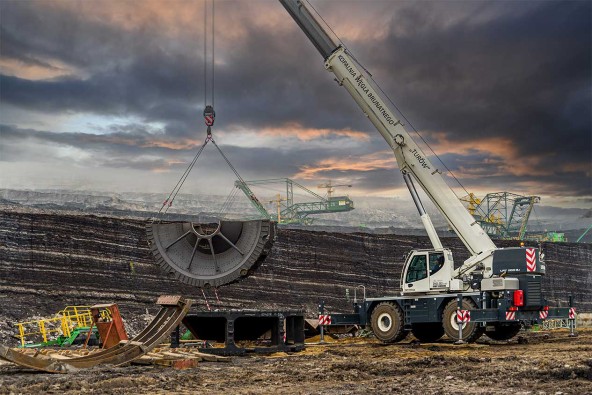
Brings power to difficult terrain - The LRT 1100-2.1 with its 50 metre telescopic boom delivers the high lifting capacities required above all for hoisting the heavy components of massive coal excavators.
“Seven granite blocks in twenty minutes”
Logistics company DB has also recently purchased some new lifting equipment for the Port of Szczecin. One of the jobs at the port of this traditional Hanseatic city on the border with Germany and linked to the Baltic Sea by the Szczecin Lagoon is handling massive stone blocks made of granite. There are several modern Liebherr LRT 1090-2.1 rough terrain cranes in action around the terminals. One of these white and grey giants, which speed through the long aisles between hundreds of massive stone cubes, is operated by Jarek Stańczyk. With his four-strong team, the young man loads the waiting trucks with these heavy cubes at a remarkable speed or hoist the stones arriving by ship off roll trailers. Initially he has no time for our questions or a quick portrait photo. We will have to wait until his lunch break. But even then, taking a quick snapshot in front of his crane, he tells us briefly and with no little pride that he is able to load seven of the heavyweight blocks with his machine in just twenty minutes. “As long as I don’t have to do move the crane.” With that he jumps into the car in which his colleagues are already waiting for him impatiently because they are hungry. And off they go to lunch.
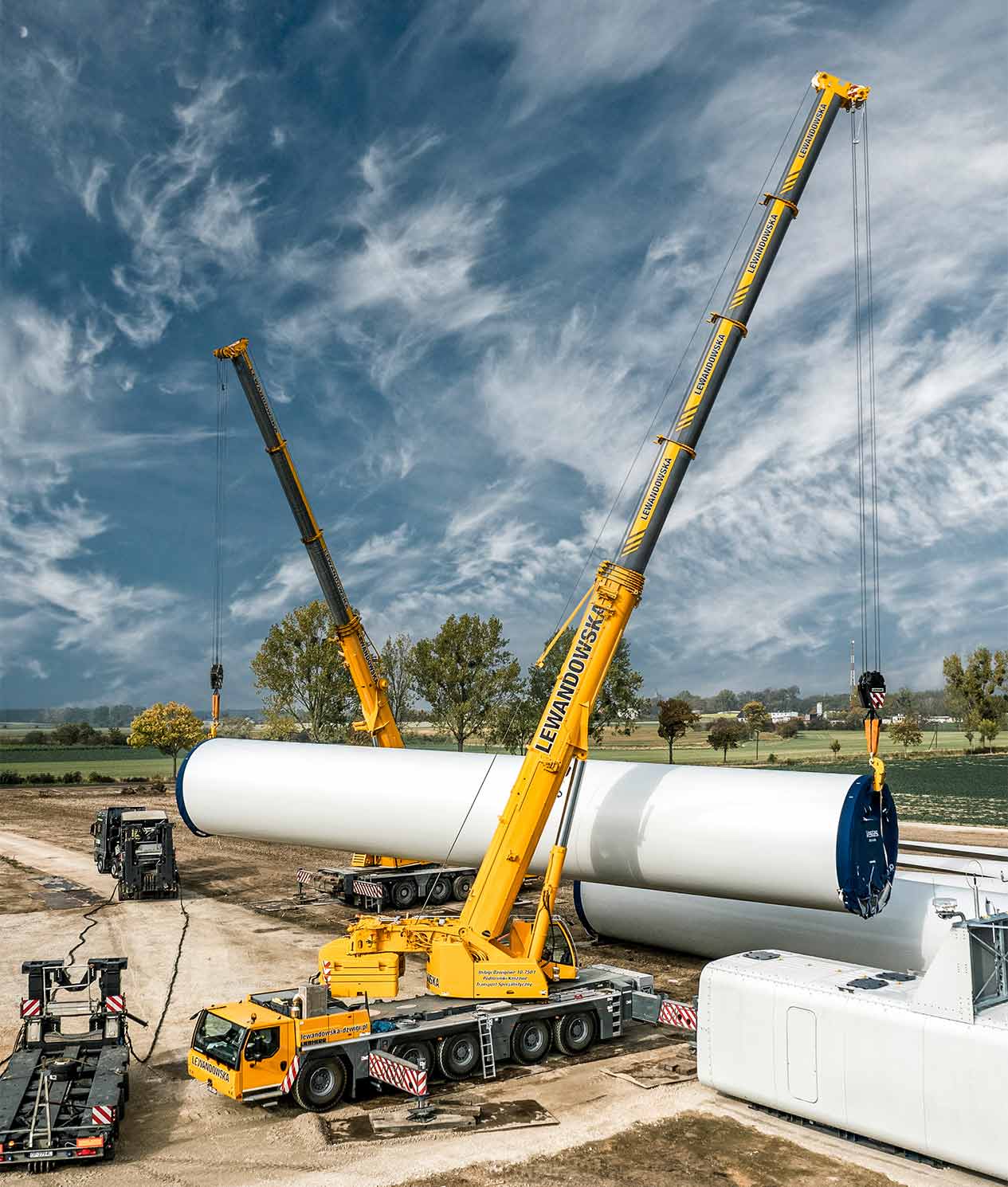
Daiusz Szklar, Manager of the Technical Department at DB Port Szczecin manages to find a little more time for us. “Although we also load prefabricated concrete components and other piece goods, we actually mainly handle these heavy granite blocks using our efficient Liebherr machines. That means, of course, that we need powerful machines because the biggest of them weigh in at 30 tonnes”, he adds. “We purchased our first rough terrain crane around five years ago and now use three of these LRT 1090-2.1 cranes for handling work. The cranes are fantastic, first of all as far as user-friendliness is concerned and secondly also in terms of the efficiency. If we need to hoist cocoa beans into a warehouse at a great height or load granite onto trucks – they have a great radius and also fantastic visibility for the operators due to the tilting cab. The machines also deliver speed and great stability. So as far as I am concerned they are just brilliant.”
Such massive praise at the end of great journey is a delight to hear, of course. And we thank you for it. Or even better, in your own language: Dziękuję.
… follow-up!
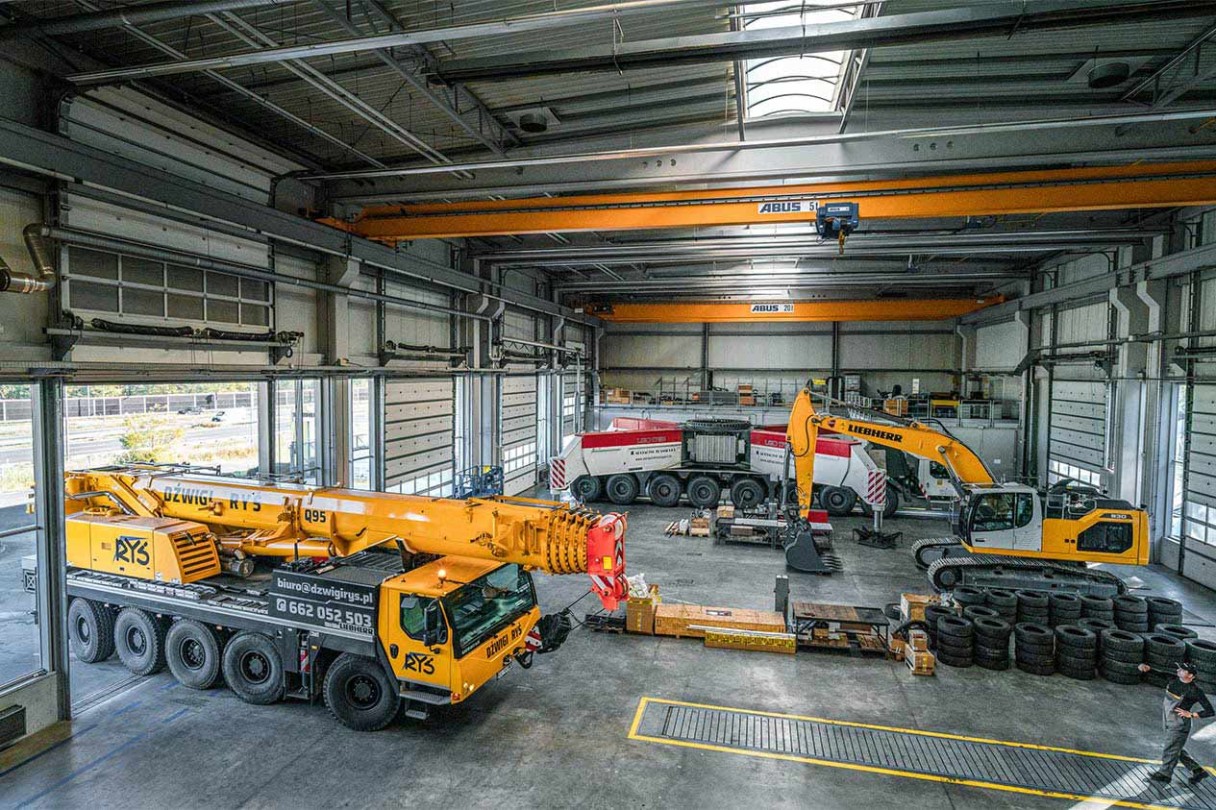
We can now look at a history stretching back almost forty years of Liebherr in Poland, a near neighbour to our home country. One of the people who provided us with information and further insight into activities there is Marceli Bednarek. A graduate engineer, he is a member of the management team at Liebherr’s sales and service company in Poland (Liebherr-Polska sp. z o.o.) as well as being its Sales and Marketing Director. He is also an old hand as he has been working for Liebherr in Poland for more than 35 years. We also asked Bogdan Majek some questions. He is a young colleague who told us about the everyday practice of a mobile crane service engineer.
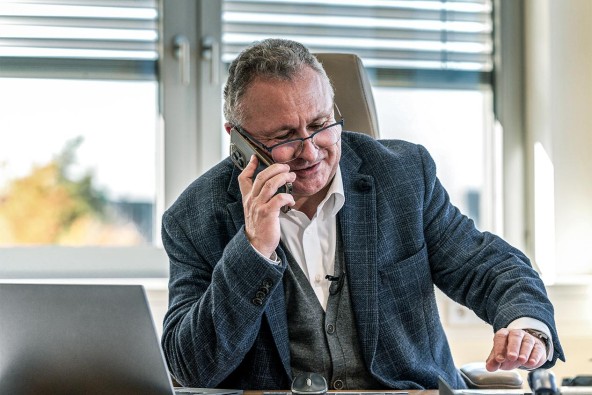
Marceli Bednarek, Managing Director at Liebherr-Polska sp. z o.o.
Mr Bednarek, how does the market for mobile and crawler cranes currently look from your point of view as the Managing Director of Liebherr-Polska?
Marceli Bednarek: The Polish market is developing really very dynamically as far as we are concerned. The country is one of the most important markets in Europe for our group. As far as mobile and crawler cranes are concerned, we are experiencing ever increasing interest in new machines. Above all, customers with a good credit rating are deciding more and more to purchase new cranes after a long period in the past where they were mainly interested in second-hand. During the last year, we have sold more new cranes than used machines to our partners in Poland for the first time.
What is a typical crane contracting company in Poland like?
First of all, our range of customers is extremely varied. There are lots of private companies providing services in the market. These include many small companies that operate between a few and several dozen cranes. Our largest partners have a complete portfolio of mobile cranes and in some cases also have crawler cranes with a lifting capacity of 1,600 tonnes. Traditionally, the large lignite mines have been our customers for decades. As have the ports in the north of the country. They were also among our first business partners in Poland as the first large shipment of 14 rough terrain cranes from Ehingen was delivered to Gdansk in the 1980s. These were LTL 1030 machines for handling piece goods.
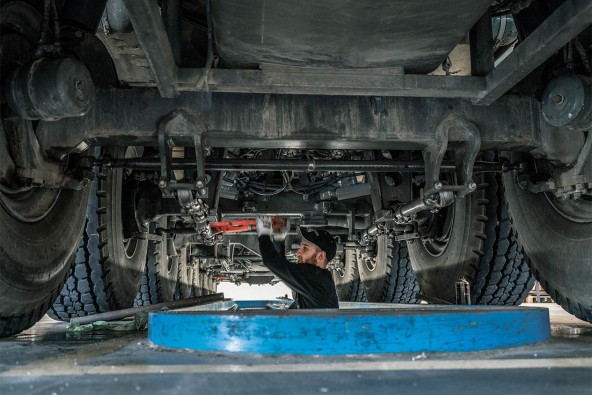
What support can our customers and partners in Poland expect from Liebherr?
Our greatest strength, and one which benefits our customers, is the outstanding service organisation run by Liebherr-Polska. We have sites close to Warsaw, in Gdansk and in Poznan. And, of course, we have our main outlet in Ruda Śląska, in the south of Poland. In our enormous assembly shed which has two gantry cranes, the larger of which has a lifting capacity of twenty tonnes, we are able to carry out lots of repair work in perfect conditions. More recently, we have also been able to offer our customers’ crane operators the facility to send live pictures for error diagnostics from the site to our service centre so that we can provide them with help more quickly and directly. In addition, our service vehicles have a full set of tools, including special tools for troubleshooting work on Liebherr machines and cranes. We also provide our customers with the fastest possible support in terms of the delivery of spare parts by giving them extremely short lead times.
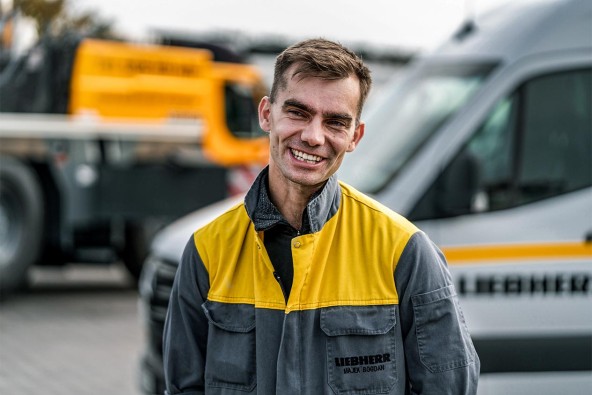
Bogdan Majek, Service Engineer at Liebherr-Polska sp. z o.o.
Mr Majek, how quickly can you, a service engineer, get to our customers on site if they have a problem with a crane?
That depends, of course, on exactly where the crane is located. My ten colleagues in the mobile service team and I are located all over Poland. I am responsible for the districts of Wielkopolskie, Pomorskie, Lubelskie and Dolnośląskie in north-west Poland. Generally, from the time that the problem is reported, we get to the customer within one to three days. The urgency of the situation also plays a major role of course.
And what if things are really urgent?
Then, of course, we try to do everything possible to provide our customers with fast support. Most of the spare parts required are available from stock. That means that we can get a spare part to the crane within one day. In extremely important and urgent cases, we have even sent parts by taxi from the Liebherr warehouse in Berlin direct to the site. That enables us to complete repair work within a few hours, extremely quickly in other words.
This article was published in the UpLoad magazine 01 | 2023.

